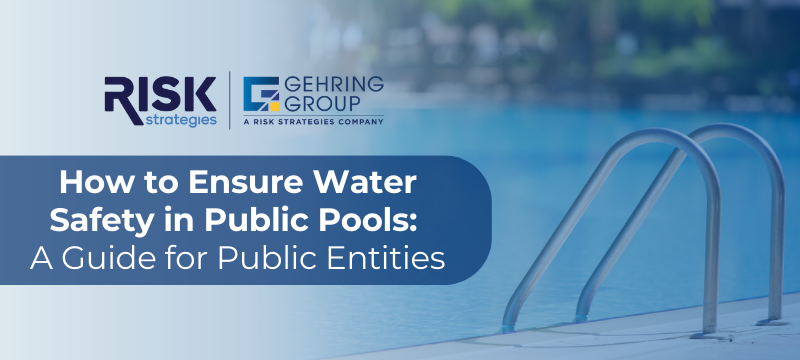
Summer is here and as temperatures rise, many find themselves seeking out ways to beat the heat, including visiting pools. As recreational hubs, public pools offer invaluable community benefits, but they also present significant risks. Ensuring water safety in public pools goes beyond just keeping the water clean. It’s a complex task that involves a blend of vigilant maintenance, regulatory compliance, and educating the public on safety practices. Effective water safety measures are essential to mitigate these risks and safeguard both patrons and entity’s liability.
Understanding the Risks
Public pools, by their nature, attract large numbers of people, including children and inexperienced swimmers. According to the Centers for Disease Control and Prevention (CDC), there are thousands of swimming-related illnesses reported annually, underscoring the critical importance of maintaining water quality and safety in public pools.
The primary risks associated with these facilities include:
- Drowning and Near-Drowning Incidents: The most severe risk, often resulting from inadequate supervision and poor swimming skills.
- Slips, Trips, and Falls: Pool decks and locker rooms can become slippery, leading to injuries.
- Chemical Exposure: Improper handling or mixing of pool chemicals can result in harmful exposure or accidents.
- Waterborne Illnesses: Inadequate sanitation can lead to the spread of infections and illnesses.
The Cornerstones of Water Safety
Diligent Maintenance and Regular Inspections
- Routine Checks: Regularly scheduled maintenance and inspections are crucial for identifying and addressing potential hazards before they escalate.
- Water Quality Management: Keeping chlorine and pH levels within the ideal range (1-3 parts per million for chlorine) ensures the water remains clean and safe for swimmers.
Adherence to Safety Guidelines
- Clear Signage: Posting visible and understandable pool rules helps in preventing accidents and ensuring that all swimmers are aware of expected behaviors.
- Lifeguard Presence: Ensuring that qualified lifeguards are always on duty significantly reduces the risk of drowning and other water-related emergencies.
Educational Initiatives
- Swimming Lessons: Offering swimming lessons and water safety education can drastically reduce the risk of drowning, especially among children.
- Staff Training: Continuous training for pool staff on the latest safety protocols and emergency response techniques is imperative.
Regulatory Compliance
- Model Aquatic Health Code (MAHC): Following the MAHC’s comprehensive guidelines on everything from pool design to operational management underpins health and safety.
- Local and Federal Regulations: Compliance with all levels of government regulations ensures pools meet the highest standards of safety and cleanliness.
The collective effort of public entities, pool operators, and the community is essential in creating safe, enjoyable swimming environments. By prioritizing water safety as a core aspect of public health, we not only prevent accidents and health issues but also enhance the quality of life for all pool users, helping our communities find joy, relaxation, and a sense of togetherness.
Check out our other blog articles HERE.